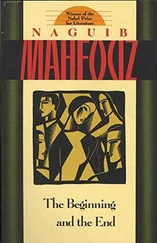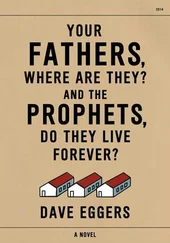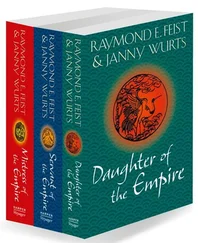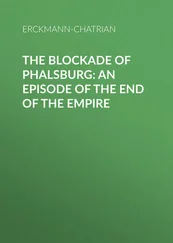Chalmers Johnson - The Sorrows of Empire - Militarism, Secrecy, and the End of the Republic
Здесь есть возможность читать онлайн «Chalmers Johnson - The Sorrows of Empire - Militarism, Secrecy, and the End of the Republic» весь текст электронной книги совершенно бесплатно (целиком полную версию без сокращений). В некоторых случаях можно слушать аудио, скачать через торрент в формате fb2 и присутствует краткое содержание. Год выпуска: 2003, ISBN: 2003, Издательство: Macmillan, Жанр: Старинная литература, на английском языке. Описание произведения, (предисловие) а так же отзывы посетителей доступны на портале библиотеки ЛибКат.
- Название:The Sorrows of Empire: Militarism, Secrecy, and the End of the Republic
- Автор:
- Издательство:Macmillan
- Жанр:
- Год:2003
- ISBN:9780805077971
- Рейтинг книги:4 / 5. Голосов: 1
-
Избранное:Добавить в избранное
- Отзывы:
-
Ваша оценка:
- 80
- 1
- 2
- 3
- 4
- 5
The Sorrows of Empire: Militarism, Secrecy, and the End of the Republic: краткое содержание, описание и аннотация
Предлагаем к чтению аннотацию, описание, краткое содержание или предисловие (зависит от того, что написал сам автор книги «The Sorrows of Empire: Militarism, Secrecy, and the End of the Republic»). Если вы не нашли необходимую информацию о книге — напишите в комментариях, мы постараемся отыскать её.
The Sorrows of Empire: Militarism, Secrecy, and the End of the Republic — читать онлайн бесплатно полную книгу (весь текст) целиком
Ниже представлен текст книги, разбитый по страницам. Система сохранения места последней прочитанной страницы, позволяет с удобством читать онлайн бесплатно книгу «The Sorrows of Empire: Militarism, Secrecy, and the End of the Republic», без необходимости каждый раз заново искать на чём Вы остановились. Поставьте закладку, и сможете в любой момент перейти на страницу, на которой закончили чтение.
Интервал:
Закладка:
If World War I generated the ideological basis for American imperialism, World War II unleashed its growing militarism. It was then, as retired Marine Colonel James Donovan has written, that the “American martial spirit grew to prominence.” 20The wars with Germany and Japan were popular, the public and the members of the armed forces knew why they were fighting, and there was comparatively little dissent over war aims. Even so, the government carefully managed the news to sustain a warlike mood. No photos of dead American soldiers were allowed to be printed in newspapers or magazines until 1943, and the Pentagon gave journalists extensive guidance on how to report the war. 21
World War II saw the nation’s highest military participation ratio (MPR)—that is, percentage of people under arms—of any of America’s wars. With some 16,353,700 men and women out of a total population of 133.5 million serving in the armed forces, World War II produced an MPR of 12.2 percent. Only the MPR of the Confederate side in the Civil War was higher, at 13.1 percent, but the overall ratio for both sides in the Civil War was 11.1 percent. The lowest MPRs, both 0.4 percent, were in the Mexican (1846-48) and Spanish-American Wars, followed by the Persian Gulf War of 1991 at 1.1 percent. 22(This latter figure is, however, unreliable since a significant portion of the forces “under arms” at the time of the Gulf War were not engaged in combat or even located in the gulf region but were manning the United States’s many garrisons and ships around the world.)
World War II produced a nation of veterans, proud of what they had achieved, respectful but not totally trusting of their military leaders, and almost uniformly supportive of the use of the atomic bombs that had brought the war to a rapid close. President Franklin Roosevelt played the role of supreme commander as no other president before or since. He once sent a memo to Secretary of State Cordell Hull saying, “Please try to address me as Commander-in-Chief, not as president.” 23Congress did not impose a Joint Committee to Conduct the War on Roosevelt, as it had on President Lincoln during the Civil War, and military institutions like the Joint Chiefs of Staff were still informal and unsupervised organizations created by and entirely responsible to the executive branch. As Colonel Donovan has observed, “With an agreed policy of unlimited war, Congress was also satisfied to abdicate its responsibilities of controlling the military establishment.... Some military leaders believed civilian control of the military was a relic of the past, with no place in the future.” 24
The most illustrious of World War II’s American militarists, General Douglas MacArthur, challenged the constitutional authority of President Harry Truman during the Korean War, writing that it was “a new and heretofore unknown and dangerous concept that the members of our armed forces owe primary allegiance or loyalty to those who temporarily exercise the authority of the Executive Branch of the Government rather than to the country and its Constitution which they are sworn to defend. No proposition could be more dangerous.” 25On April 11, 1951, Truman charged MacArthur with insubordination, relieved him of his command, and forced him to retire. Truman’s action was probably the last classic assertion of the constitutional principle that the president and the civilians appointed by him control the military. During the presidencies of John F. Kennedy and Bill Clinton, in particular, the high command would often be publicly restive about the qualities of the commander in chief and come close to crossing the line of constitutional legality without actually doing so. As we shall see, during the Kennedy administration the Joint Chiefs of Staff proposed that the military secretly carry out terrorist incidents in the United States and use them as a pretext for war with Castro’s Cuba, and President Clinton was never able to regain full authority over the high command after the firestorm at the beginning of his administration over gays in the military.
After World War II, high-ranking military officers, including Generals Marshall and Eisenhower, moved into key positions in the civilian hierarchy of political power in a way unprecedented since the Civil War. George C. Marshall, the wartime chief of staff, became the country’s first secretary of state from a military background. (There have been only two others since: General Alexander Haig in the Reagan administration and General Colin Powell in the second Bush administration.) Paradoxically, General Marshall left his name on what is probably the country’s single greatest foreign policy failure, the 1946 Marshall Mission to China, which attempted to mediate between the Communists and the Nationalists in the Chinese civil war, and its single greatest success, the 1947 Marshall Plan, which helped rebuild postwar Europe economically.
But World War II, although a popular war, did not create American militarism, and had the Cold War not ensued it is reasonable to assume that traditional American opposition to standing armies and foreign wars would have forcefully reasserted itself. If there has been a growing trend toward militarism, there also remains a vein of deep suspicion of armies. The military almost totally demobilized in the years immediately after 1945 even though the draft remained in place until 1973, when an all-volunteer military came into being following almost a decade of protests against the war in Vietnam. On a pragmatic level, the public has proved ambivalent about wars because of the casualties they produce. And World War II produced the second-largest number of casualties of all America’s wars.
The Civil War, by far the bloodiest war in our history, had profoundly affected popular attitudes and generated a deep resistance on the part of the American people to sending their sons and daughters into battle. The number of combat deaths for both sides in the Civil War was 184,594, considerably less than the 292,131 American deaths in World War II. However, when one adds in the 373,458 Civil War deaths from other causes—disease, privation, and accidents, including deaths among prisoners of war—the Civil War total becomes 558,052 wartime deaths. The figures for World War II, with 115,185 deaths from other causes, total 407,316. 26
World War II was not as bloody as the Civil War, except in one important measure, that of intensity of combat, which is well conveyed by the ratio of those killed in action per month* The Civil War lasted forty-eight months and saw 3,846 killed per month, whereas World War II lasted forty-four months (for the United States) with 6,639 killed per month. It was this intensity of combat that Americans remember from World War II. It made them skeptical about future wars, particularly those in which there was no immediate threat to the United States or in which the United States had not been attacked. The legacy of World War II for the development of militarism was thus ambiguous. More Americans participated in the war effort more enthusiastically than in any other conflict, seemingly breaking the hold of traditional doubt about the value of war making. On the other hand, the country swiftly demobilized after the war and people returned to their normal peacetime pursuits.
In the years immediately following World War II, the great military production machine briefly came to a halt, people were laid off, and factories were mothballed. Some aircraft manufacturers tried their hands at making aluminum canoes and mobile homes; others simply went out of business. With the onset of the Cold War, however, and the rise of a professional military class, many of the norms characteristic of wartime were reinstated, and the armaments industry went into full production. Between 1950 and 2003, the United States experienced four periods of intense military mobilization accompanied by huge spurts in weapons purchases (see graph).
Читать дальшеИнтервал:
Закладка:
Похожие книги на «The Sorrows of Empire: Militarism, Secrecy, and the End of the Republic»
Представляем Вашему вниманию похожие книги на «The Sorrows of Empire: Militarism, Secrecy, and the End of the Republic» списком для выбора. Мы отобрали схожую по названию и смыслу литературу в надежде предоставить читателям больше вариантов отыскать новые, интересные, ещё непрочитанные произведения.
Обсуждение, отзывы о книге «The Sorrows of Empire: Militarism, Secrecy, and the End of the Republic» и просто собственные мнения читателей. Оставьте ваши комментарии, напишите, что Вы думаете о произведении, его смысле или главных героях. Укажите что конкретно понравилось, а что нет, и почему Вы так считаете.











